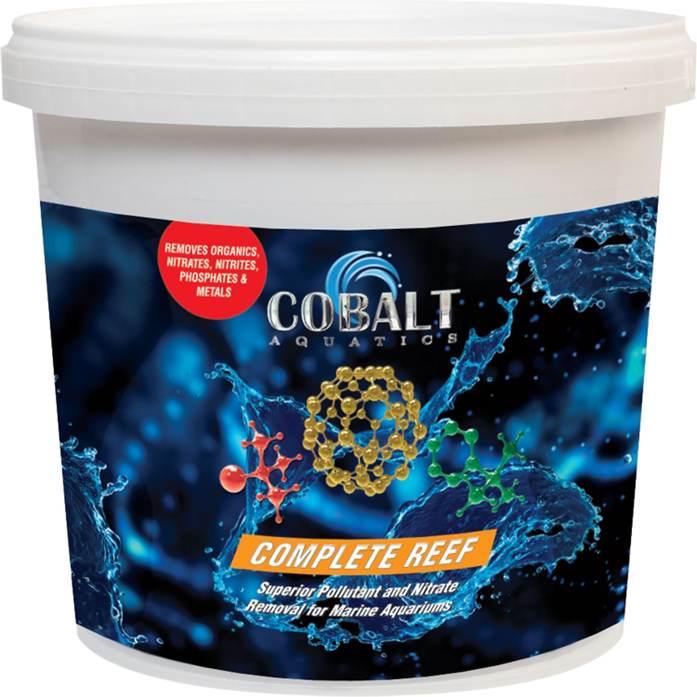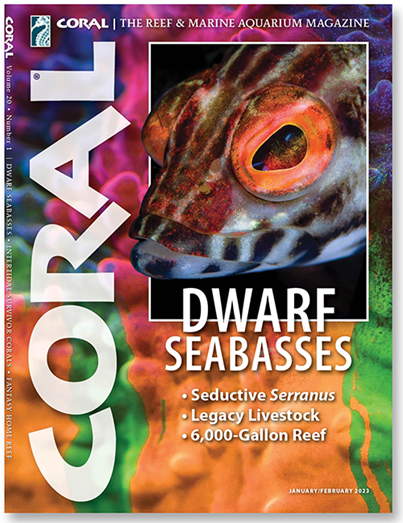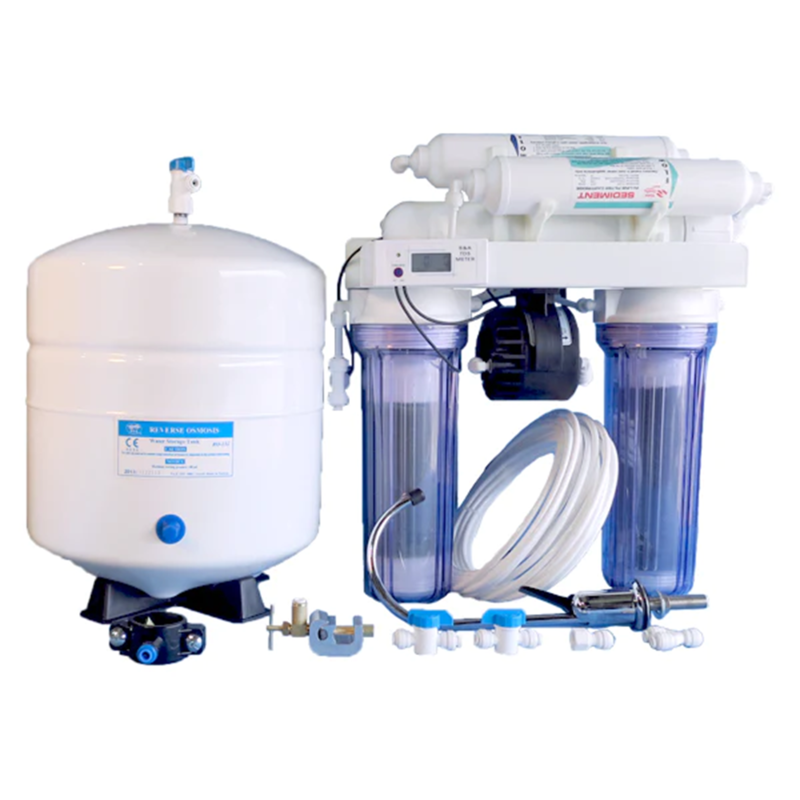-
Posts
21,554 -
Joined
-
Last visited
Content Type
Profiles
Forums
Gallery
Events
Store
Everything posted by Origami
-
The first 50 WAMAS members attending our annual meeting on February 4th (at McLean HS) will receive a free 2023 Reef Life calendar, compliments of Coral Magazine! Come and get it! Sent from my SM-N976V using Tapatalk
-
For the raffle, from Cobalt Aquatics One 53-ounce tub of Cobalt Aquatics Complete Reef. A $70 value. Cobalt Aquatics Complete Reef is a broad-spectrum cleaner for saltwater aquariums is designed to combine the power of carbon media, organic removers and nitrate removers. It is developed to remove organics, nitrites, nitrates, phosphates and metals without negatively affecting calcium, magnesium or alkalinity levels. This saltwater aquarium cleaner is crafted to clean up the pollutants that live rock and protein skimmers leave behind. Use with a cannister filter or media reactor.
-
Reef2Rainforest Media has just donated TEN one-year subscriptions to CORAL MAGAZINE to our Annual Meeting raffle! Each subscription is a $37 value and includes both a print copy mailed to your home and access tot heir current Digital Edition. Hailed by critics as “the world’s best reefkeeping magazine,” CORAL is written by leading aquarium experts and marine biologists, lavishly illustrated with breathtaking images, and filled with ideas and inspiration for beginning to expert reefkeepers. Every big issue brings information about • Fish & Invertebrate Species • Reef Life Rarities • World-Class Aquarium Systems • Marine Aquarium Advice — Beginners to Breeders • Tropical Travel & Discovery, Thought-Provoking News, Portraits, Interviews, Technology Updates, and much more. I've been a subscriber for over ten years now and each issue is a keeper.
-
Lynn at Reef Nerd Aquatics is donating two Gift Certificates for the raffle. One is for $100 and the other for $50. Thanks, Lynn!
-
Please report back what you find.
-
Which Avast do you have? The one with an outlet on the front or one that integrated with a controller? There both pretty simple inside. Air leakage would be the most likely culprit. Try a new, short length of tubing and plunge the open end into a glass of water and test if it switches reliably. My Avast ATOs (I have two) have both operated without fail now for over 10 years of continuous operation.) Sent from my SM-N976V using Tapatalk
-
If it doesn't retract, then I tend to agree, it's some form of algae. BTW, not all peppermints are Aiptasia eaters.
-

Switching Up My Tank - Documenting Growth Over Time
Origami replied to p3rmafrost's topic in Dedicated Tank (Build) Forum
Here you go, p3rmafrost. This is the new, merged thread moved to the Tank Build forum. -
Leading off our raffe announcements is a big one from longtime WAMAS sponsor, Air, Water & Ice who has generously donated a Hurricane Dual Home/Reef reverse osmosis drinking water PLUS 5-stage RO/DI system. A $275 value, the HURRICANE DUAL HOME / REEF (with Permeate Pump) is a five (5) stage RO/DI (Reverse Osmosis/De-Ionizing) reef keeping system that uses a 75 GPD (Gallons Per Day) FilmTec Membrane for truly great water quality and production rates. This model has been designed from the ground up to provide absolutely pure, lab grade RO/DI water for your reef, while at the same time providing you with a constant supply of exceptionally purified RO drinking water. The permeate pump gives you the extra water pressure needed for the new refrigerators. With (2) separate outputs already provided, you will never have to fuss with the connections, as with other systems. If you want BOTH great drinking water as well as absolutely the best source water upon which to build/maintain your reef tank, the Hurricane Dual Home/Reef setup is for you.
-

Looking for fish stocking advice for my 120gal
Origami replied to FrontosaTony's topic in General Discussion
Speaking directly to tangs, there tends to be more aggression between fish in the same genera. Maximum size can vary, too. While you rarely see fish in an aquarium reaching these sizes, the relative sizes can give you some idea of what can happen. For example, I have several tangs in my 240 and, for example, my chevron tang is probably a good 8" long now. Here's a list of the tangs from your list and their reported max size according to Live Aquaria (which I recommend that you look at when researching your species). Powder blue Acanthurus 9" blue tang Paracanthurus 12" sailfish tang Zebrasoma 16" chevron Ctenochaetus 11" yellow Zebrazoma 8" As you can see, your sailfish tang has the potential to be the largest in this group. Powder Blue's have a reputation for aggression. Blue tangs have a reputation for being ich magnets. But, honestly, all can be aggressive - especially in the confines of an aquarium. While intra-species aggression is noted, I've successfully kept multiple Zebrazoma tangs at one time. My suggestion would be, if you really want to keep multiple tangs, get the yellow and the Powder Blue in about the same size and at the same time. If you do this for all your tangs, they can sort things out and likely will, eventually, grow to accept each other. -
Just to be sure, if you poke at it, it doesn't retract, does it?
-
It's been a month. Status?
-
Still looking, Lynn? I may be wrong in my recollection, but I thought that monkiboy's family was into construction. He might have a reference.
-

Looking for fish stocking advice for my 120gal
Origami replied to FrontosaTony's topic in General Discussion
I'd probably go with the 2-inch sandbed in your case. 3-inches is not deep enough for anaerobic value and only adds depth for detritus accumulation. With that many fish, managing/removing detritus & nutrients should be a primary concern. Some of the fish that you've selected can get quite large. Especially some of the tangs. There may not be sufficient volume and cover to keep aggression under control. If you start with smaller fish like you've mentioned, and put some of the more aggressive species in at the same time, you may have better luck. -

Adding additional tank to system- plumbing help.
Origami replied to GOSKN5's topic in General Discussion
It's been a while since you posted, but I'm just seeing this now. I would probably put a valve on the tapped line going into the refugium display tank. Without it, you're creating a low pressure point in your main line that will almost certainly reduce flow considerably in the right leg to the main tank and possibly reduce flow to the left leg in the process. To keep this from being a problem, add a valve. Better yet, tap off the initial line from the return pump rather than the right leg with a tee and a valve so that both the right and left legs to the main tank have similar flow. -
No, you can't stir it with a power head all the time. The reason is that you'll have suspended solids that will make dosing highly variable depending on density. Kalkwasser is the saturated solution without the suspended solids. The proper way to do this is to stir (to ensure saturation), let the solids settle, and then dose from the top of the container. Then add new, fresh water and repeat the process, replenishing the kalk (calcium hydroxide) as needed. Just mixing it good - even manually - is all that you need.
-

Switching Up My Tank - Documenting Growth Over Time
Origami replied to p3rmafrost's topic in Dedicated Tank (Build) Forum
Can I put this in the Tank Build Threads area? You can then post updates to the same thread to keep the information together. If you have other, similar threads that you'd like merged, just let me know and I can get that done, too. While long, your last post is entertaining. You got me laughing several times over. Kudos for keeping your humor while surviving various onslaughts and challenges! From your tank photos and description of your powerhead placement, it's not surprising that you'd have a dead zone behind the rockwork. If desired, you might put a small powerhead low on one of the side panels to create a low-level current directed in this "alleyway". On the otherhand, you could simply vacuum this area toward the back as part of your weekly maintenance routine. Having detritus collect in one area can actually make it easier to clean it out. As for PAR levels, anything above 160 or so should be able to grow most corals. For some SPS (not all), I might go a little higher - say 200, but plenty of tanks get by with less. We have a tendency to push a whole lot of light down into our tanks (thinking more is better) and that's not always required. If your corals are growing and the color is good, then you're golden. -
Welcome back yagerboy!
-
I don't know that they're all that different. Both are basically GFO, I believe. One seems to have a more consistent particle size (probably due to the manufacturing approach). But, one site that I saw described Rowa Phos as a "man made ferric hydroxide material," which is another way of saying GFO (since both the oxide and hydroxide ions are trapped in the GFO matrix). Generic GFO may be far cheaper in bulk, though. What difference did you read about? Sudden drops in tank chemistry can stress some corals, so beware of quick fixes. However, for really bad phosphate situations, some have resorted to using Lanthanum Chloride to form an insoluble precipitate with phosphate to remove it. If your tank is relatively small, a big water change may be a safer.
-
You've done an amazing job. It's been incredible to follow this journey and, while it ended the way it did, I think that we all learned something. I applaud the effort and hope that, one day, we can follow along on another journey like this one.
-
Reefer gone wild!
-
Awesome. I love these mid-size, rimless tanks! You've done a great job with aquascaping, both in form and color.
-
Our tanks can be amazing to explore. If you have a jeweler's loupe or similar strong magnifier (Harbor Freight sells both a loupe set and a clip-on magnifier), it can be used to explore things on the glass and the leading edge of the sandbed. I remember doing that years ago and being fascinated by all the life on and under the sandbed.
-
Hilary's picture, biographical sketch, and topic/abstract have been updated in the first post.
-
If you're a sponsor or member that would like to sell on-site at the meeting, send me a PM (@Origami) requesting the space. Thanks!





